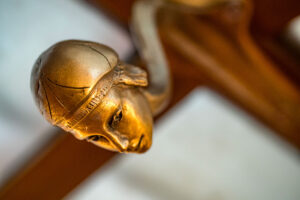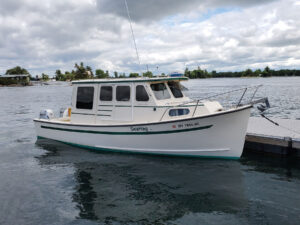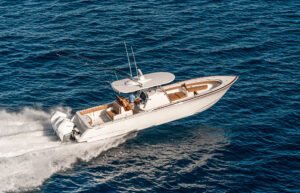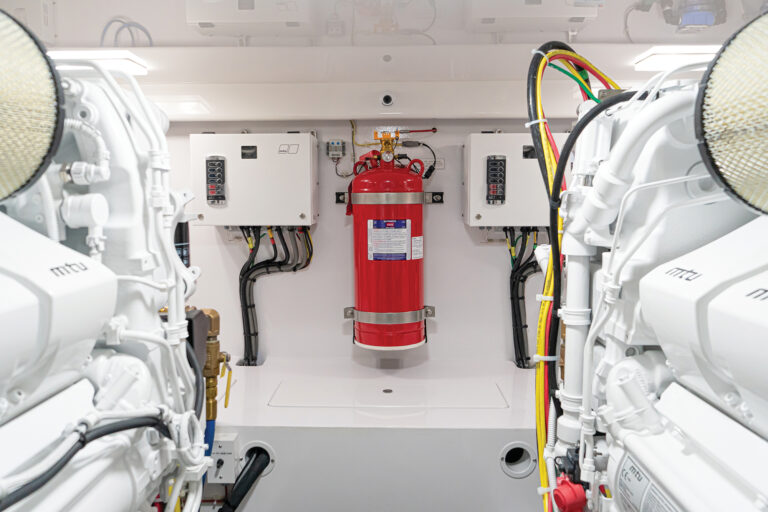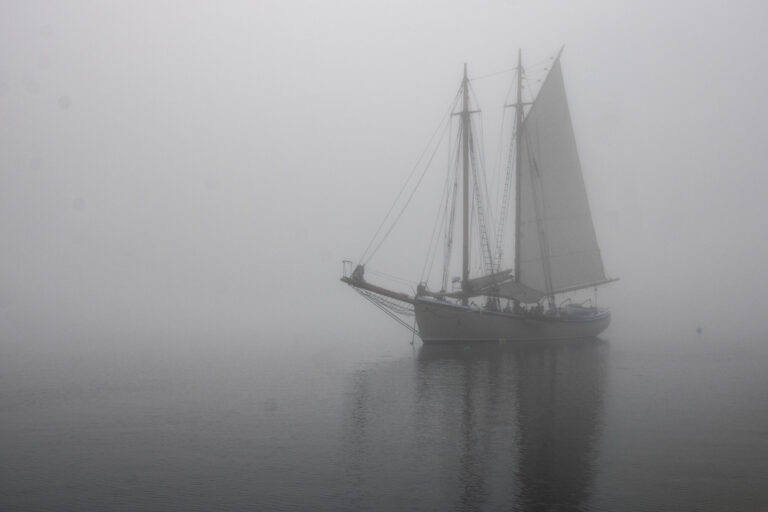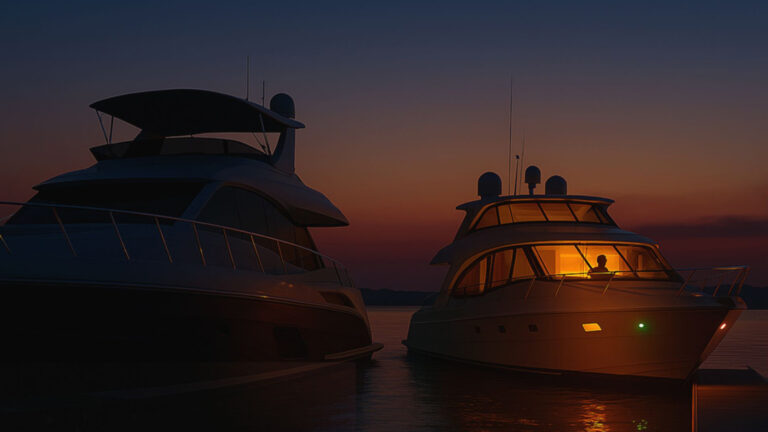
Patti and Bill Linscott were on a mission when they began the hunt for a coastal cruiser. Specifically, they wanted a vessel that would allow them to explore the Salish Sea, an area of open and protected waters and tributaries stretching from the lower arms of Puget Sound to a point in the Strait of Georgia, near the northern end of Vancouver Island. For this purpose, they wanted a proven design with good seakeeping abilities, sufficient room on one level to make living aboard a comfortable experience, and enough character to stand out from the crowd. That criteria eventually led them to a Pilgrim 40, which they named Sunshine.
Sunshine was not the first boat owned by the Linscotts. After navigating the shoals and depths of raising five children, the couple bought a retirement home with a view of tree-studded islands and deep blue waters in Des Moines, Washington—about halfway between Seattle and Tacoma. “We both had family boating experiences in our early years,” Patti says, “So in 2001, when we found ourselves living adjacent to a marina and a hive of boating activity, it seemed obvious we should eventually become boaters again.”
Several years later, they bought their first boat, followed closely by a second. “The first was a 1928 Lake Union Dreamboat measuring 42 feet in length. It was a plumb-bowed wooden classic dating from the late 1920s,” Bill says. “It needed quite a lot of restoration, which was going to take a while, so Patti and I decided to purchase a new Ranger Tug 25 in 2006. We wanted a day boat and weekend cruiser to use while the Dreamboat was being restored. That Ranger Tug kept us happy and busy until our retirement in 2013.”

The couple then decided it was time to downsize to a single boat for cruising with friends from the marina. That’s when they found the Pilgrim 40 in Portland, Oregon. Painted maroon and white, it was hull number 16 and manufactured in 1984 by Canadian boat designer and builder H. “Ted” Gozzard at North Castle Marine/Gozzard Yachts in Goderich, Ontario. Bill says 41 of these designs were built there, although Ed McKnew’s profile of the Pilgrim 40 in the 2017 edition of his PowerBoat Guide puts the total number at just over 50. The single 100-hp Cummins diesel drives Sunshine efficiently at 7 to 8.5 knots, with electrical power provided by a 7.5-kW Westerbeke genset.
“One of the first things we did was paint the topsides sky blue, sunshine yellow and white, with acrylic coatings,” Bill says. “But we kept the varnished mahogany window panels that wrap around the aft deck natural. These were custom-made by a previous owner’s son; they’re removable but solidly interconnected. When the aft bulkhead doors are open, the windows greatly expand our living space.”
Patti helped design and select new appliances for the galley renovation. The couple upgraded the head compartment and installed new electronics at the helm, including a Garmin multifunction display. (They decided to keep the original autopilot.) They also added a rain gutter to the exterior and wood trim to the interior side of the deckhouse windows. In the deckhouse is a Hammond keyboard, which Bill plays most mornings they’re aboard. To make room for the instrument, they had to remove a second settee, but they installed two loose chairs for flexible seating. The couple often entertains other musically inclined friends for impromptu jam sessions.

Having spent a number of years cruising the waterways of South Puget Sound with friends and on their own, the Linscotts are now contemplating longer trips up the Strait of Georgia, with an eye to exploring Desolation Sound. If you’re in the area and hear keyboard music slipping across the waters of the Salish Sea, look around for the Linscott’s distincitive blue, yellow and white trawler with the tugboat lines. And if you hail the couple, chances are good they’ll be happy to talk about their unique Pilgrim 40.
WALKTHROUGH
Ted Gozzard gave the Pilgrim 40 a full-displacement hull with a modest draft of 3-feet 3-inches and a full keel with sufficient depth to protect the prop and rudder. The engine room is partially below the waterline for a more efficient shaft angle. With its plumb bow, rounded knuckle, flared topsides forward and rounded stern, the 40’s hull shape is conducive to steady, predictable motion across a range of conditions. Wide sidedecks make for easy passage from bow to stern for line handling, as do tall bulwarks and rails. Sliding doors port and starboard provide access to the raised pilothouse. Two steps down from the pilothouse, the sole stretches uninterrupted to the built-in stern bench on the aft deck. The owner’s cabin and head compartment are forward.
North Castle Marine/Gozzard Yachts in Ontario no longer makes the Pilgrim 40, but the yard continues to produce custom sailing yachts from the designs of H. “Ted” Gozzard.
Pilgrim 40
LOA: 40’0”Beam: 14’0”Draft: 3’3”Displ.: 22,000 lbs.Power: (1) 100-hp Cummins dieselFuel: 142 gals.Water: 240 gals.
This article was originally published in the April 2024 issue.


